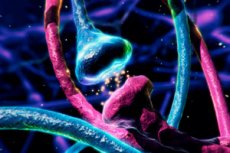New publications
Group of neurons that reduce anxiety discovered: key to new type of therapy for anxiety disorders
Last reviewed: 03.08.2025

All iLive content is medically reviewed or fact checked to ensure as much factual accuracy as possible.
We have strict sourcing guidelines and only link to reputable media sites, academic research institutions and, whenever possible, medically peer reviewed studies. Note that the numbers in parentheses ([1], [2], etc.) are clickable links to these studies.
If you feel that any of our content is inaccurate, out-of-date, or otherwise questionable, please select it and press Ctrl + Enter.

Researchers from the University Medical Center Utrecht (UMC Utrecht, the Netherlands) have identified for the first time a group of neurons located around the locus coeruleus (LC) in the brain that are able to suppress stress reactions and reduce anxiety. The results of the study were published in the scientific journal Science Advances.
Why is this important?
Anxiety disorders are among the most common mental illnesses in the world. They significantly reduce the quality of life of patients, and existing treatments are not always effective or are accompanied by serious side effects. A new discovery provides an opportunity to develop a fundamentally new approach to the treatment of anxiety states based on natural mechanisms of the brain.
The essence of the discovery
A central role in anxiety is played by a brain structure called the locus coeruleus (LC), a major source of norepinephrine, a neurotransmitter that is heavily involved in stress responses. However, how exactly the brain controls LC activity and regulates anxiety has remained unclear.
A team of scientists led by Dr. Annalisa Sculté from UMC Utrecht discovered that around the locus coeruleus there is a group of specialized neurons that secrete a special substance called neuropeptide Y (NPY). These neurons are called peri-LC NPY neurons.
The researchers showed that peri-LC NPY neurons act as a kind of “brake” for the locus coeruleus: when activated, they release neuropeptide Y, which locally suppresses excessive production of norepinephrine, and thus reduces the stress response and anxiety.
How did the study proceed?
Scientists conducted a series of experiments on laboratory animals to establish the role of peri-LC NPY neurons in regulating anxiety:
- Using genetic techniques and high-precision microscopy, these neurons were identified and studied, and it was found that they were located around, but separate from, the blue spot itself.
- Using optogenetics and chemogenetics, the researchers selectively activated and suppressed peri-LC NPY neurons in mice.
- Behavioural tests showed that when peri-LC NPY neurons were activated, mice showed a marked reduction in anxiety-like behaviour. For example, the animals explored open spaces more often in the elevated plus maze test – a direct indicator of reduced anxiety.
- It has also been shown that this effect is achieved precisely through the release of neuropeptide Y, which acts through a special receptor, NPY-Y1.
Key findings of the study
- Activation of peri-LC NPY neurons significantly reduces anxiety in response to stressful stimuli.
- Suppression of these neurons, on the contrary, leads to an increase in anxiety reactions.
- Neuropeptide Y plays a central role in this mechanism by interacting with the Y1 receptor and suppressing the activity of the locus coeruleus.
- This mechanism has been shown to be a natural way for the brain to adapt to stressful situations and reduce excess anxiety.
Prospects for the application of the discovery
The discovery of the peri-LC NPY neuron mechanism could significantly change the approach to treating anxiety disorders:
- Development of new generation drugs. Stimulation of NPY-Y1 receptors may become the basis for new effective drugs that will selectively reduce anxiety without the serious side effects inherent in many modern anxiolytics (for example, benzodiazepines).
- Improving the effectiveness of psychotherapy. Combining psychological assistance with the impact on the discovered mechanism could significantly enhance the therapeutic effect.
- Help for severe mental disorders. The new approach may also help patients with post-traumatic stress disorder (PTSD) and other conditions associated with stress dysregulation.
Opinion of the authors of the study
“Our discovery demonstrates the presence of a natural system in the brain that actively suppresses excessive anxiety,” said lead author Dr Annalisa Skulte. “Now that we know how it works, we can look for ways to activate this built-in system to help the millions of people who suffer from anxiety disorders.”
